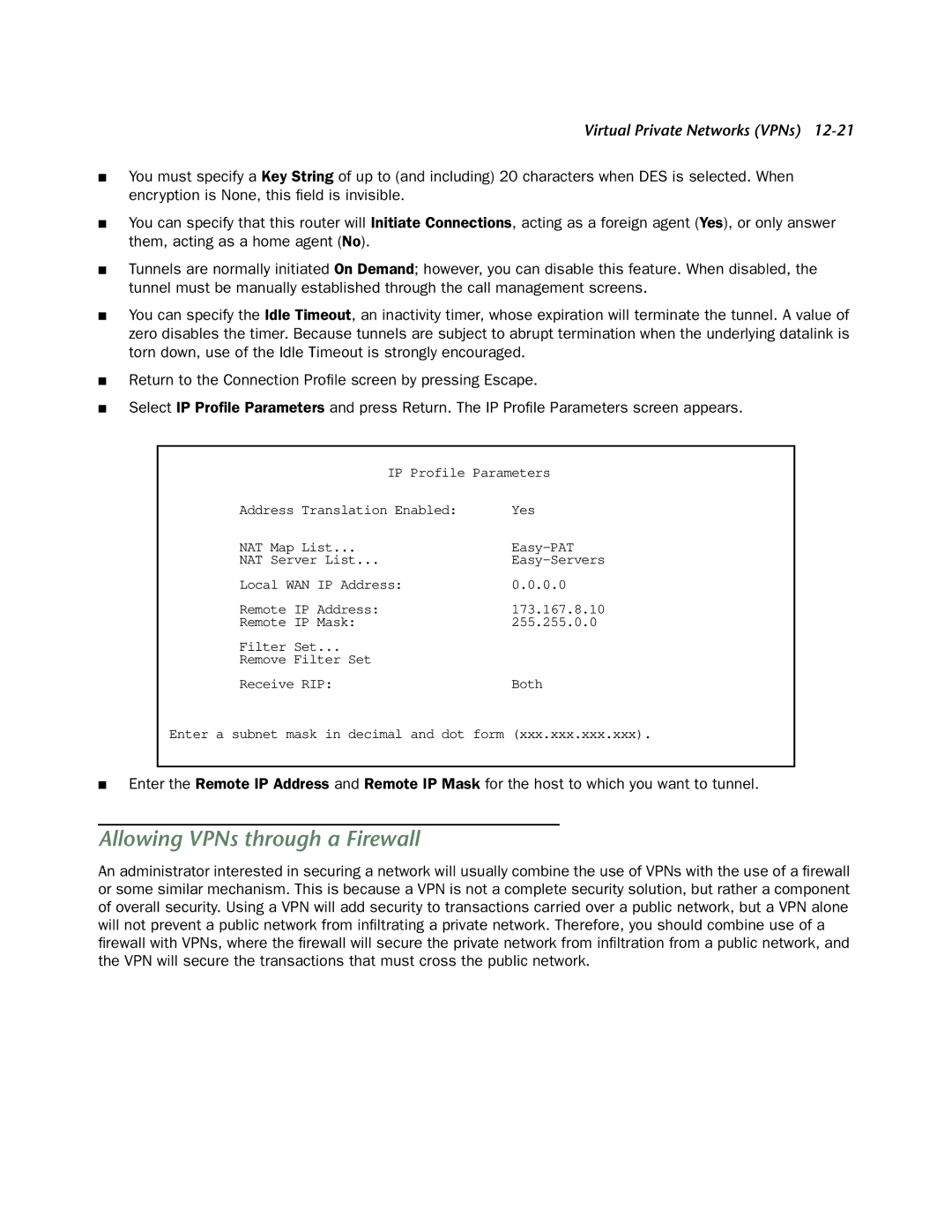
Virtual Private Networks (VPNs)
■You must specify a Key String of up to (and including) 20 characters when DES is selected. When encryption is None, this field is invisible.
■You can specify that this router will Initiate Connections, acting as a foreign agent (Yes), or only answer them, acting as a home agent (No).
■Tunnels are normally initiated On Demand; however, you can disable this feature. When disabled, the tunnel must be manually established through the call management screens.
■You can specify the Idle Timeout, an inactivity timer, whose expiration will terminate the tunnel. A value of zero disables the timer. Because tunnels are subject to abrupt termination when the underlying datalink is torn down, use of the Idle Timeout is strongly encouraged.
■Return to the Connection Profile screen by pressing Escape.
■Select IP Profile Parameters and press Return. The IP Profile Parameters screen appears.
IP Profile Parameters
Address Translation Enabled: | Yes |
NAT Map List... | |
NAT Server List... | |
Local WAN IP Address: | 0.0.0.0 |
Remote IP Address: | 173.167.8.10 |
Remote IP Mask: | 255.255.0.0 |
Filter Set... |
|
Remove Filter Set |
|
Receive RIP: | Both |
Enter a subnet mask in decimal and dot form (xxx.xxx.xxx.xxx).
■Enter the Remote IP Address and Remote IP Mask for the host to which you want to tunnel.
Allowing VPNs through a Firewall
An administrator interested in securing a network will usually combine the use of VPNs with the use of a firewall or some similar mechanism. This is because a VPN is not a complete security solution, but rather a component of overall security. Using a VPN will add security to transactions carried over a public network, but a VPN alone will not prevent a public network from infiltrating a private network. Therefore, you should combine use of a firewall with VPNs, where the firewall will secure the private network from infiltration from a public network, and the VPN will secure the transactions that must cross the public network.
